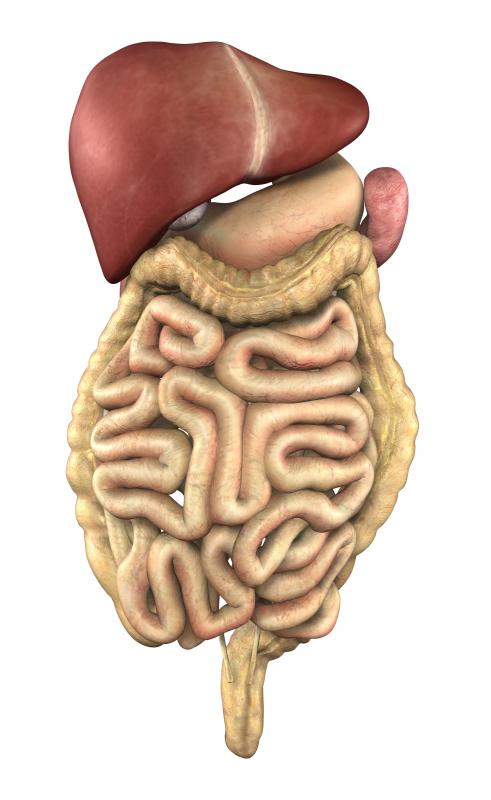At WiseGEEK, we're committed to delivering accurate, trustworthy information. Our expert-authored content is rigorously fact-checked and sourced from credible authorities. Discover how we uphold the highest standards in providing you with reliable knowledge.
What are the Organs of the Digestive System?
The digestion system is a series of organs within the body that work together to break down food. When food is chewed and swallowed, the body is not able to immediately use it as nourishment because the molecules in the food are too large to be absorbed effectively. Once food is consumed, it must be broken down into a simpler form so the body can extract the various nutrients from the food. During digestion, food may be processed into nutrients for the body to use for energy or converted into waste and removed from the body. There are a wide variety of organs of the digestive system, which all have distinctive functions in order to convert, absorb, and expel food.
The mouth is the beginning of the organs of the digestive system. When food is consumed, it is first chewed in order to break it down into pieces that are easier to swallow. During the chewing process, the food is mixed with saliva, a clear liquid produced by the salivary glands. Saliva not only moistens the food to make swallowing easier, but it also contains an enzyme that breaks down the starch in food into smaller molecules that can be moved through the body.

Once the food is moistened with saliva, it is then swallowed and pushed down the throat and moves into another of the organs of the digestive system, the esophagus. The esophagus is a tube that connects the throat to the stomach. As the food approaches the esophagus, the organ walls contract and push the food down into the stomach.
The stomach is one of the primary organs of the digestive system. Once food reaches the stomach from the esophagus, the stomach muscles relax in order to allow the food inside, where it is then mixed with digestive juices made by the stomach. These digestive juices assist in breaking down the food into even smaller molecules before pushing the food along into the small intestine.

The small intestine is a tube that is coiled beneath the stomach and is responsible for taking the nutrients out of the food that can be used by the body for energy, and separating them from the parts that cannot be used. This extraction process is performed with the assistance of digestive juices launched from three other organs of the digestive system: the liver, gallbladder, and pancreases. The liver, an organ located in the upper right portion of the abdomen, produces bile, a liquid that can extract fat from foods. The bile is moved to the gallbladder, where it is kept until it is needed for digestion. The pancreas, an organ located near the stomach, produces juices that extract carbohydrates, protein, and fat from foods.

The nutrients and the remaining food separate and go into two different organs of the digestive system. Fats, proteins, and carbohydrates are moved to the liver, where they are stored or distributed throughout the body for energy. All remaining food is transported through the large intestine, a coiled tube beneath the small intestine, and into the colon, the bottom of the large intestine, where any water in the food is absorbed. The food becomes solidified and is transported into the rectum, the tube between the large intestine and the anus, an opening at the end of the rectum that allows the solid waste to be pushed out of the body, completing the digestion process.
AS FEATURED ON:
AS FEATURED ON:















Discuss this Article
Post your comments